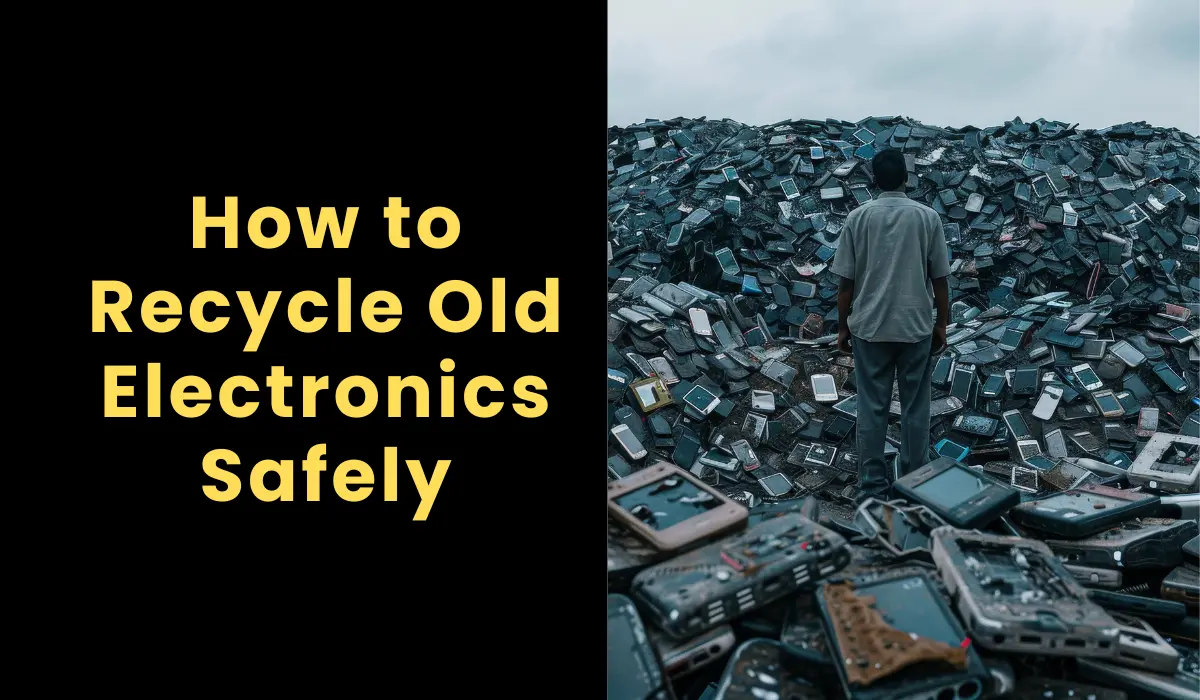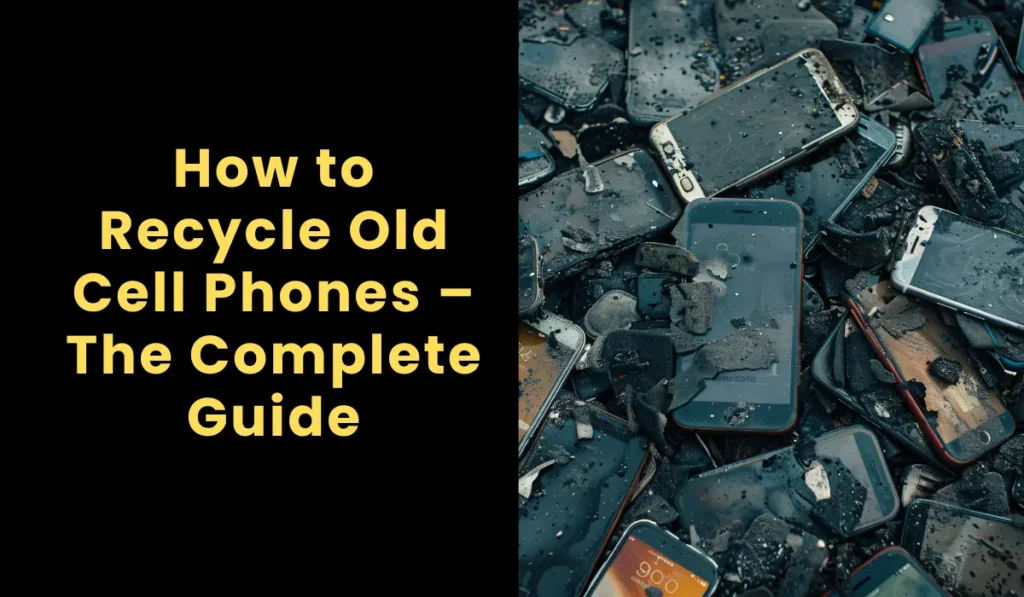How to Recycle Old Electronics Safely
Recycling old electronics is no longer optional. It is one of the most important ways to reduce electronic waste disposal, limit pollution, and protect the environment from toxic materials hidden inside everyday gadgets. Phones, laptops, chargers, and appliances contain metals and chemicals that can damage soil, water, and air if thrown away incorrectly. At the same time, these devices hold valuable parts that can be reused, repaired, or recovered through efficient e-waste recycling programs. Responsible action also protects your personal data and supports laws designed to keep harmful waste out of landfills.
This guide explains how to recycle old electronics responsibly, how professional recyclers handle end-of-life devices, and what happens inside a certified facility. You’ll learn the right steps to prepare your device, protect your data, choose a trusted recycling partner, and understand the full electronics recycling process from start to finish. By following these steps, you help create safer communities, reduce pollution, and support a more sustainable future.
Why Responsible Electronics Recycling Matters

Old electronics pile up faster than ever. Businesses replace computers every few years, people upgrade phones often, and unused gadgets sit forgotten in drawers. When these devices end up in landfills, toxic components like lead, mercury, and lithium can leak into soil and water. This increases the environmental impact of e-waste, creating serious long-term risks.
Another major issue is data security. Many people throw out devices without removing private data, which puts sensitive information at risk. Proper recycling protects both the planet and personal information. When you follow responsible steps, you support landfill alternatives for electronics, reduce dangerous waste, and help recover valuable materials that can be used again in manufacturing.
Understanding What Counts as Electronic Waste (E-Waste)
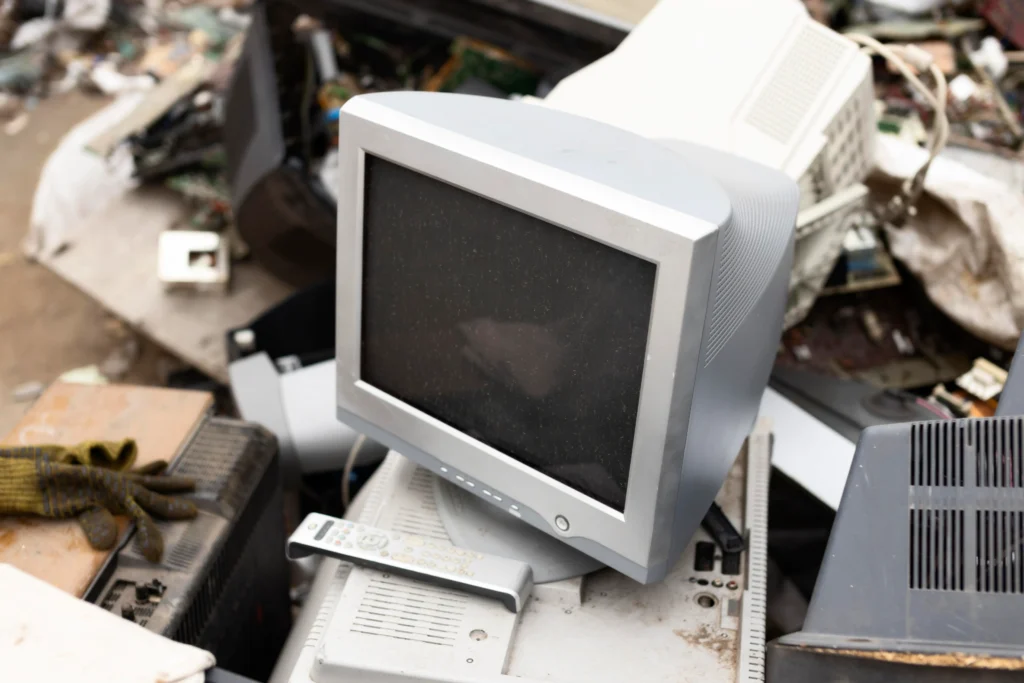
Electronic waste includes any device powered by electricity, batteries, or wiring. Most modern electronics contain a mix of metals, plastics, glass, and chemicals. Many of these materials can be recovered through electronic materials recovery programs. These recovered parts can be turned into new devices, tools, or even medical equipment.
E-waste also includes hidden items people often forget to recycle — like cables, power banks, and chargers. When these items are recycled properly, they reduce the overall electronics waste stream and prevent harmful substances from entering the environment.
Types of Electronics You Can Recycle
Most electronics can be safely recycled. Everyday items like phones, tablets, computers, printers, cameras, monitors, cords, and small appliances are all accepted at recycling centers. Many programs also take cables, chargers, routers, and accessories, which helps expand recycling unwanted gadgets across more households and businesses.
Large home appliances such as microwaves or heaters can also be recycled, though some require special processing. Batteries, especially lithium-ion ones, need careful handling because they can explode or leak harmful chemicals if thrown away incorrectly. Whether you want to recycle old devices or get rid of broken equipment, there is usually a safe option available.
| Electronic Item | Recyclable? | Notes |
|---|---|---|
| Phones, tablets, laptops | Yes | Must follow data-wiping before recycling |
| Monitors & TVs | Yes | CRTs need specialized handling |
| Small appliances | Yes | Remove batteries first |
| Cables, chargers | Yes | See how to recycle cables and chargers |
| Lithium batteries | Yes (special handling) | Avoid damaging or puncturing |
Which Electronics Cannot Be Recycled (or Need Special Handling)
Some electronics contain materials that require special treatment. CRT monitors, mercury-based items, and damaged batteries must be taken to certified facilities that understand safe e-waste handling procedures. Broken lithium-ion batteries can cause fires, making them dangerous for regular recycling bins. Devices contaminated with chemicals or excessive rust may need alternative disposal routes.
When dealing with hazardous components, local rules may restrict curbside pickup or community drop-off programs. Always check recycling guidelines before handling hazardous electronic materials, especially older electronics with outdated components.
Check Local E-Waste Recycling Laws and Safety Rules
Many regions have strict electronic recycling laws that determine what you can or cannot throw in the trash. Some states ban electronics from landfills completely. Others classify specific items as hazardous waste. Businesses often must follow additional rules related to corporate e-waste management, including safe storage and secure destruction.
Local agencies publish updated instructions for disposing of items like batteries, monitors, and devices with mercury. Understanding these rules protects the environment and helps you avoid fines. It also ensures every device enters a responsible sustainable tech disposal process.
Secure and Remove Personal Data Before Recycling
Before recycling any device, always remove all personal information. Backup your files, sign out of accounts, and complete a factory reset. Many devices have built-in tools that wipe the memory safely. Never try to open a device on your own to remove internal parts — it can damage batteries or expose dangerous elements.
Proper data removal prevents leaks, identity theft, and privacy issues. Certified recyclers follow strict standards for how recyclers destroy data, using secure shredding and overwriting systems to ensure nothing can be recovered. This step is essential for recycling phones, computers, and tablets safely.
Decide Whether to Reuse, Repair, Sell, or Donate First
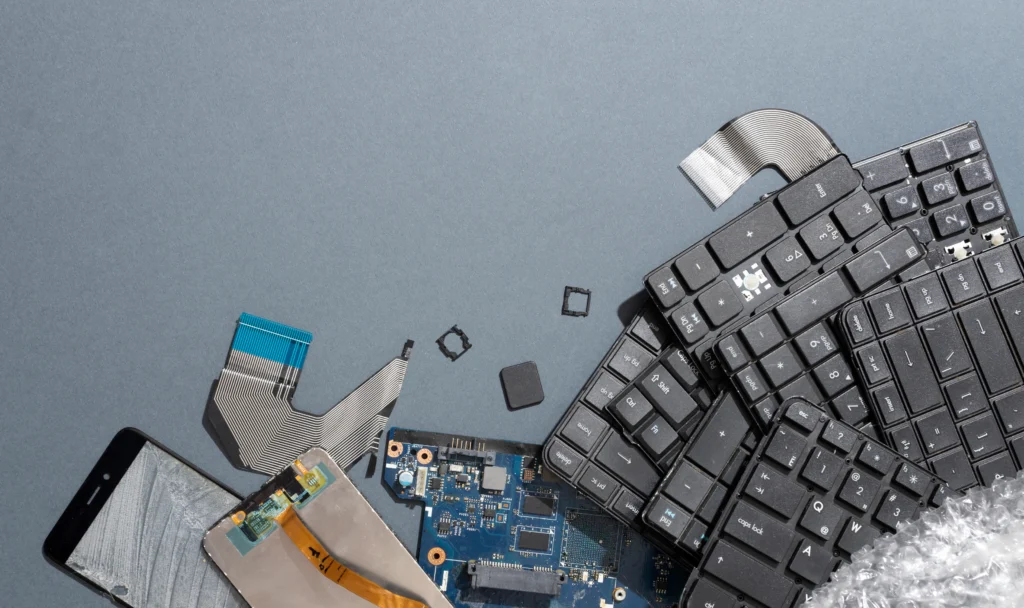
Sometimes the best option is not recycling at all — it is reuse. Many devices still function or can be repaired easily. Extending their life helps reduce the overall electronics waste stream and supports sustainability.
Use Devices Longer or Repurpose Them
Old phones can become webcams, security cameras, or backup devices. Tablets can be used for digital recipes or home automation controls. Extending device life supports reuse vs recycle electronics practices, which reduce waste and save resources.
Repair or Refurbish Before Disposal
Repairing broken electronics is cheaper than buying new ones. Many shops and online guides help you fix screens, batteries, or ports. When a device is repaired, it becomes suitable for reuse or donation, increasing its electronics refurbishment value.
Sell or Trade for Cash or Credit
Many brands offer trade-in electronics programs where you receive credit for your old device. Selling directly to someone often gives better value but requires proper testing and wiping.
Donate to Charities, Schools, or Nonprofits
Giving away working electronics helps schools, shelters, or charities access technology. Donation programs follow the donation and reuse hierarchy, ensuring the device is used fully before entering the recycling stage.
Collect and Prepare Electronics for Recycling
When you’re ready to recycle, store your devices safely. Keep them in a dry place and avoid removing internal parts. If batteries are removable, take them out and store them separately to prevent damage. Fragile screens should be packed in soft materials to avoid breaking.
Proper storage is important because devices left unsecured can be stolen or damaged. Many businesses follow strict rules for secure device destruction, ensuring no unauthorized access occurs before devices reach a recycler.
Where and How to Recycle Old Electronics
Recycling options vary by region. Certified recyclers with R2 or e-Stewards certifications follow strict environmental and safety standards. These facilities handle sorting, shredding, and recovery of valuable materials.
Municipal drop-off events collect electronics during specific times each year. Retailers and manufacturers run manufacturer take-back programs where customers return old devices for recycling. Workplaces also organize community recycling programs and collection drives to gather large volumes of e-waste.
Whenever possible, choose a certified e-waste recycler to ensure your devices are processed safely and ethically.
What Happens During the Electronics Recycling Process
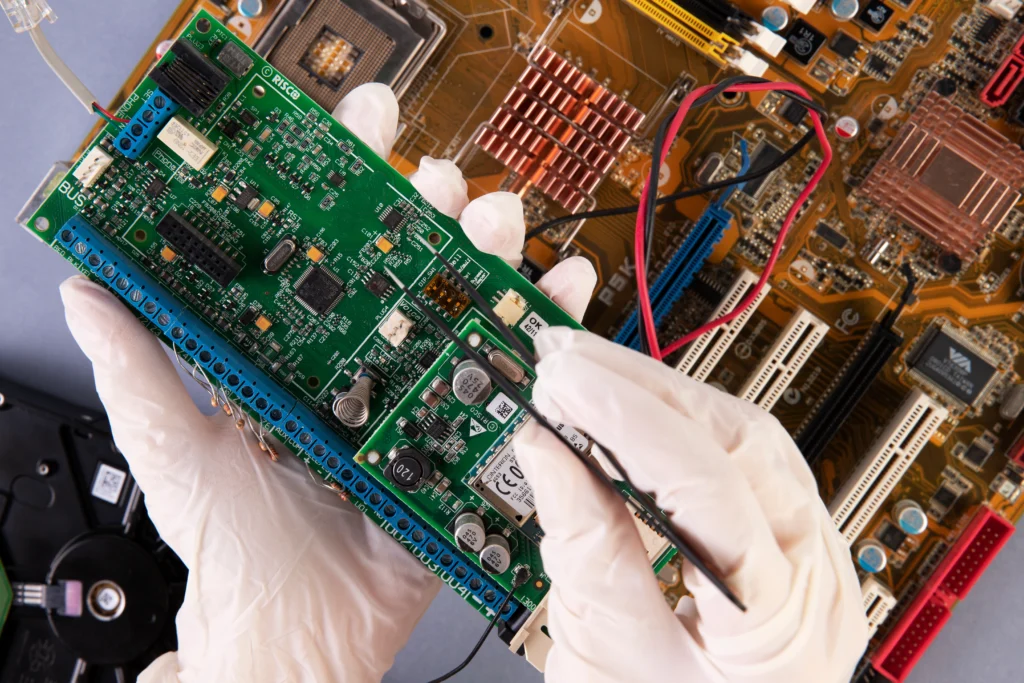
Recycling electronics involves several stages. First is collection, where devices arrive at drop-off centers or recycling facilities. Then comes safe transportation to certified plants that follow strict rules for handling end-of-life electronics.
Manual Disassembly
Technicians take devices apart to remove batteries, wiring, glass, metals, and circuit boards.
Shredding
Devices go through powerful machines that break them down into small pieces. This supports efficient shredding and sorting electronics operations.
Sorting Metals, Plastics, and Glass
Materials are separated using magnets, air flow, water separation, and optical scanners.
Rare Earth Element Refinement
Recyclers extract valuable minerals like copper, gold, neodymium, and other rare earth elements, supporting global rare earth element recovery efforts.
| Stage | What Happens | Purpose |
|---|---|---|
| Collection | Devices gathered from homes & businesses | Start of electronics recycling process |
| Disassembly | Removal of batteries & parts | Safety and material separation |
| Shredding | Devices reduced into small pieces | Efficient sorting |
| Magnetic/Water Separation | Isolating metals, plastics, glass | Electronic materials recovery |
| Refinement | Purification of rare elements | Reuse in new electronics |
How to Dispose of Batteries, Cables, and Accessories
Batteries require extra care. Damaged or swollen lithium-ion cells must never be thrown in general waste. Many centers have special programs for proper disposal of batteries to prevent fires and leaks. Power banks, chargers, and cables can usually be recycled with small electronics.
Cables and chargers contain copper and plastic that can be reused. Many people don’t realize they can recycle broken electronics like cords and adapters.
Common Mistakes to Avoid When Recycling Electronics
Many people forget to wipe data, which puts their privacy at risk. Others leave electronics unsecured for months, creating opportunities for theft. Some drop devices at unverified locations where items might be exported illegally or dumped unsafely.
Throwing batteries in the trash or “wish-cycling” random items creates serious hazards. Always check local recyclers and avoid programs that don’t follow e-waste compliance standards.
Environmental and Economic Benefits of Electronics Recycling
Recycling electronics reduces landfill waste and protects air and water from toxins. It recovers copper, aluminum, gold, and rare earth metals that can be used in new devices. This lowers energy consumption and helps reduce pollution.
Recycling also creates jobs in repair centers, recycling plants, and community recycling programs. When industries embrace sustainable tech disposal, they cut costs and protect the environment.
Future of E-Waste Recycling — New Technologies & Innovations
Recycling is improving with new tools like AI-powered scanners, robotic disassembly systems, and chemical extraction methods. These technologies boost material recovery and improve safety. Urban mining — extracting valuable materials from old electronics — is becoming an important source of rare metals worldwide.
Governments and brands are exploring deposit-return systems where consumers earn money when they return old devices. These innovations support stronger electronics waste stream management globally.
Further Reading:
How to Recycle Plastic Bottles – Complete Step-by-Step Guide
Is It Legal to Dump Ashes in the Ocean?
Is it Legal to Throw Away Batteries?
Conclusion
Recycling old electronics responsibly protects the environment, saves natural resources, and keeps dangerous materials out of landfills. Each device you recycle supports safer communities, reduces pollution, and strengthens a sustainable future. By learning how to recycle old devices correctly — from wiping data to choosing certified recyclers — you make a real impact. Small actions matter, and every responsible choice helps build a cleaner world.
The Author

I’m Muhammad Nabeel Dar, an employee in waste management and the owner of Garbage Waste Disposal with more than four years of experience helping people to control waste and garbage disposals are the best tools to control it. Read more

